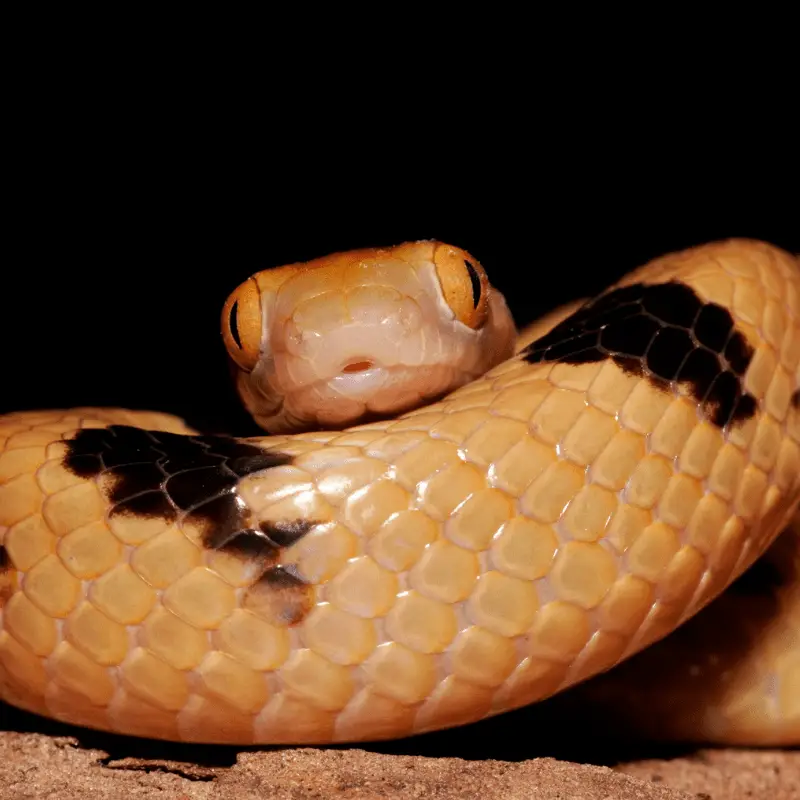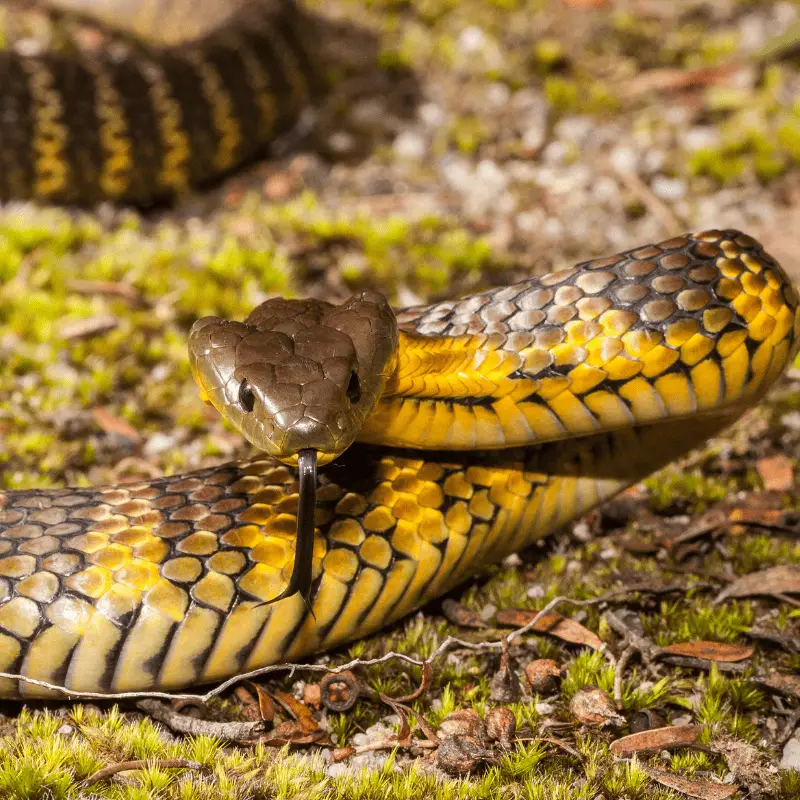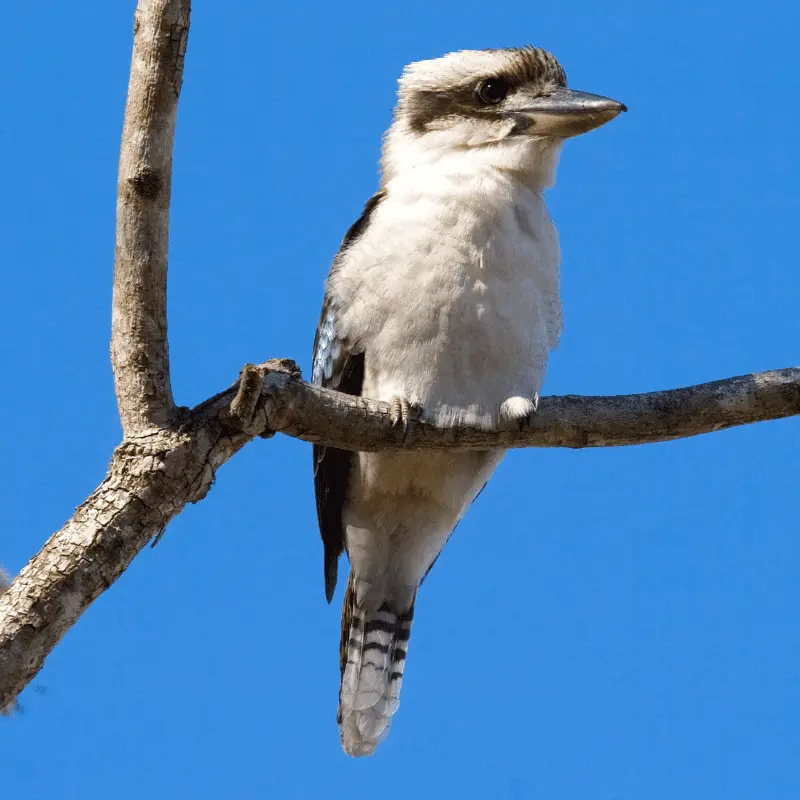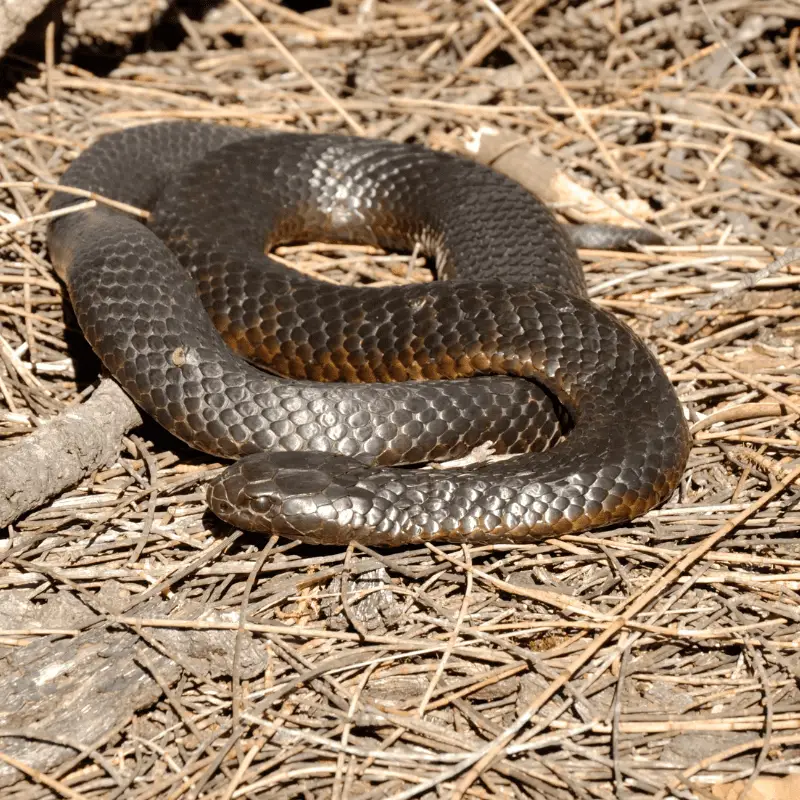Tiger snakes are the members of the cobra family that resides mainly in Australia. The venom of the snake contains a nerve paralysing agent as well as a blood clotting one. Both of these agents are deadly for humans. If provoked, the tiger snakes also flatten their head and neck to intimidate the enemy, much like their brother King Cobra.
Species Overview
- Scientific Name: Notechis scutatus
- Family: Elapidae
- Length: The size of the snakes varies significantly between 100 cm to 240 cm. However, the average length of the tiger snakes is around 1.2 meters.
- Life span: 10 to 15 years
Location
The tiger snakes are generally found within the two broad areas of Australia. These snakes can be easily found in the southeastern parts of Australia, including Tasmania and islands of the Bass Strait and southwestern parts of the country. There is a famous saying that the first British settler who had died within hours of arriving on the shores of Australia was a victim of a tiger snake bite.
- Australia
These snakes used to be abundant throughout the country. Previously, tiger snakes once caused the majority of the snakebites in the country. However, the recent urbanisation and the human modifications of the environment have significantly impacted the population of tiger snakes. These snakes are pretty common in the South Eastern, South Western, and Southern mainland of Australia. Tiger snakes are also found in offshore islands such as Tasmania.
There is some confusion about the population of tiger snakes on the Carnac island of Australia. The reason is that about 80 individual snakes were released on the island without first finding out whether the snakes were already present on the island or not.
Features
The large clear bands are one of the most distinctive features of a tiger snake. That is what makes it difficult for anyone to confuse the tiger snakes with other snakes. However, the juvenile snakes can be mistaken as the rough scale snake Tropidechis carinatus. However, the patternless tiger snakes can be mistaken as other venomous snakes, like the copperheads or austrelaps snakes. The tiger snakes found on Kangaroo Island come with a reddish belly. For that, many people misidentify these snakes as red-bellied black snakes.
Identification
Previously, the researchers have identified two different species of tiger snakes; the Eastern Tiger snakes and the Black Tiger snakes. But the recent studies have shown that the morphological difference between these two snakes is not consistent. The current gene studies have also demonstrated similar gene patterns. Hence, now the scientists have created one wide-ranging species, Notechis scutatus, which varies significantly in colourations and size.
Some of the tiger snakes come with black and yellow cross bands. However, not all snakes have the same type of pattern. The dark olive-brown to the blackish-brown pattern is the most common in the tiger snakes. The thick off white or yellow cross bands that appear on the snake’s body varies in thickness. Patternless tiger snakes are also quite common in the banded populations. The colour of these snakes varies widely from brown-black to yellowish tinge. Some species of tiger snakes consist of entirely unbanded snakes. These snakes are generally found in the southwest of Tasmania and the central highlands of the country.

The trait melanism is most prevalent among the snakes that withstand variable weather conditions. The snakes inhabiting the offshore islands or at the high altitude places have to deal with extreme weather conditions. The dark colouration among these snakes results from adaptations that enable the snakes to absorb heat at an elevated rate during the short growing season.
The head of the tiger snakes is moderately wide. There is a slight, almost invisible, distinction from the robust muscular body of the snake from the head. While performing a threat display, the snake can flatten the neck and the upper body considerably while exposing the pitch-black skin between the semi-glossy and relatively large scales.
An average tiger snake consists of 17-21 rows of mid-body scales and about 140-190 rows of ventral scale in their body. They also have a single row of subcaudal and anal scales. The squarish large frontal shield is the distinctive characteristic of the tiger snakes.
Habitat
The tiger snakes love water and can be found near water bodies, like dams, creeks, lagoons, drains, swamps, and wetlands. These snakes can also be found in highly graded areas, like grazing lands, where they can find both the water and the required cover. The tiger snakes generally prefer to take shelter in or under the fallen timbers or in deep matted vegetations. These snakes also use the abandoned burrows of mammals or other animals.
Unlike other snakes of the Elapidae family, the tiger snakes are a great climber. If and when required, they can climb great heights in both vegetation and human constructions. These snakes are found as high as 10 meters above the ground. The range of tiger snakes ranges from sea level to 1000 mt above it in Tasmania.
Seasonality
The tiger snakes are primarily active during the summer months. However, on the warm winter days, one can find the tiger snakes basking in the sun. These snakes aestivate under bounders during the colder period, in animal burrows, or the standing dead trees. These snakes can go as deep as 1.2 meters under the grounds.
Diet and feeding
The tiger snakes enjoy a varied and broad diet in the wild. Their diet includes frogs, tadpoles, fishes, birds, lizards, and other mammals. As the snake grows, the size of its prey also increases. The tiger snakes mostly showcase a diurnal nature. They hunt for their prey within broad daylight. However, on the warm evenings, you can see the tiger snakes foraging out in the open.
- Frogs
- Tadpoles
- Fish
- Birds
- Lizards
- Tadpoles
The snakes can go underwater in search of their food. They can stay submerged entirely underwater for more than 9 minutes. In the stomach of one of the tiger snake museum species, a bat was found. It simply demonstrates how high the snakes can climb to find their food. The researchers have also found invertebrate animals in the stomach of the tiger snakes. However, these animals could have been considered as part of the carrion. Insects, like moths and grasshoppers, found in the stomachs of the tiger snakes may be the prey of the snakes.

There is some evidence of cannibalism among the tiger snakes. The snakes grasp their prey and subdue them quickly with their potent venom. Sometimes they use constriction while finding their food as well.
The available prey size is considered one of the most critical factors that affect the size of the adult tiger snakes of the islands. For example, the snakes found on Chappell Island are huge. These snakes take advantage of the abundance of muttonbird chicks on the island as their prey. Compared to that, the tiger snakes available in the Roxby islands are pretty small in size. As the island does not have any nesting population of sea birds, these snakes mostly live on the small skinks.
Reproduction
The maturity length of the females and male tiger snakes varies significantly as well. In the southwestern parts of Australia, the females mature at a snout-vent length of 7563 mm, whereas, on Tasmania main island, the females mature at a snout-vent size of 850 mm. The males of the area mature when they weigh at least 500 gm.
In the breeding season, they make tiger snake combats with each other. In this warfare, each snake tries to press the head of the other snake down. The whole process often leads to intertwining their bodies. The mating season generally starts in the late summer. But it is still unsure whether this observation was conducted in the wild or on the snakes in captivity.
- Mating season: late summer
The late-season mating gives the southern species of tiger snakes an exclusive advantage. It offers them a reproductive head start even before the spring arrives. On the main island of Tasmania, the mating of the tiger snakes can last as long as seven hours. The snakes can be lethargic and may remain on the same site for days. The female tiger snakes of the southwestern part of Australia give birth to live neonates between the late summer and mid-autumn. The young are often born in a sac made of membranes. Once the neonates break free of this sac, they are entirely independent.
How many Tiger snakes are born at once?
The clutch size of the tiger snakes can range from 10 to 64 babies born at once.
- Between 10 to 64
Predators
One of the well-known predators of the tiger snakes is Cryptophis nigrescens, a snake of the elapid group. Birds, like goshawks, butcher birds, harriers, kites, ibises, and kookaburras are some other predators of tiger snakes. In one of the surveys conducted on the tiger snakes of Carnac island, it was found that a high number of snakes are blind in one or both eyes from the attacks of the nesting gulls.

Kookaburra 
Goshawk
It is not predation per se. But blindness can make the snakes vulnerable and enhance their catchability by the human hunters and non-human ones. The tiger snakes have also withstood heavy persecution by humans in the past. They are still routinely killed whenever encountered. In the last few years, a significant number of tiger snakes have become a victim of roadkill.
Danger to Humans
The aggressive defensive performance and the large size of the tiger snake make it look highly intimidating. The fact that these snakes are highly venomous did not do them any good as well. Even though these snakes are timid and prefer to escape instead of engaging in conflict, a cornered snake can still perform a fabulous threat display. While doing that, the snake will hiss loudly and will keep on deflating and inflating their bodies. If they are still provoked, the tiger snake will lash out and bite with all its might. The potent coagulating agent and neurotoxins of the venom are fatal to humans. If a tiger snake bites anyone, they should be taken to the hospital immediately.
Evolutionary Relationships
The current fragmentation of the tiger snakes occurred due to climatic changes and transforming sea levels. The tiger snake populations isolated in different islands have evolved separately in response to different kinds of environmental changes. The difference in their colour patterns, size, and other features is a result of this incident.
Conservation Status
Even though the tiger snakes were one of the most common snakes of Australia, the changes in their habitat due to human interference have created a significant impact. The extending field for cultivation has impacted the number of tiger snakes in many parts of Australia. The tiger snake population of Flinders Ranges and the tiger snake population of Chappell Island have been listed as vulnerable in IUCN lists.
What should you do after Tiger snake bite?
Even though tiger snakes are highly venomous, you can still save the tiger snake bite victims if you follow specific protocols. For example, you have to keep the victim calm. The snakebite victim should be in a resting position where the bite area is kept lower than the victim’s heart.
Use a crepe bandage to wrap the bite wound snugly. The dressing should start at the bite area, and the limb should be wrapped upwards. Keep the bitten limb as unmoving as possible. Try to move the snake bite victim to the nearest hospital or call for help immediately. Even when the victim is treated and discharged, they should keep in touch with the medical professionals to keep the lingering side effects in check.
Can you keep a Tiger snake as a pet?
No, you must not try to keep tiger snakes as a pet. Even though Tiger snakes do not bite the victims purposefully, these snakes are highly dangerous and venomous. So, for your safety, you should not own a Tiger snake as your pet.

